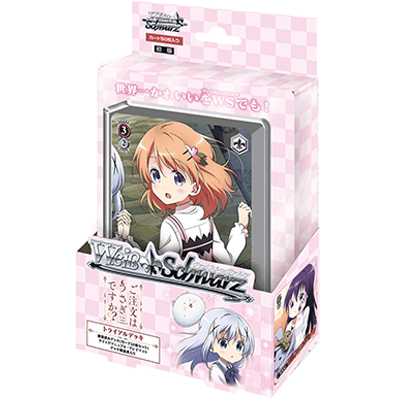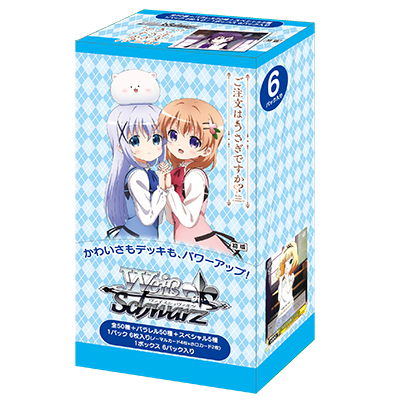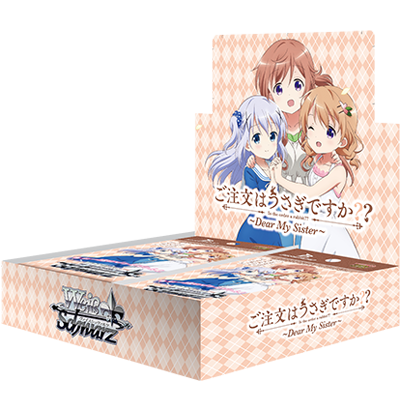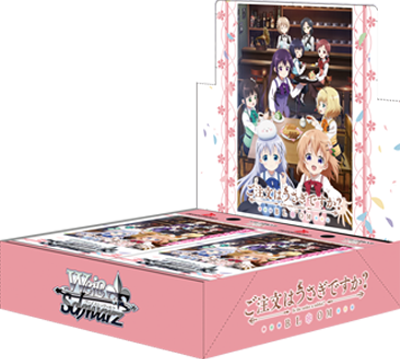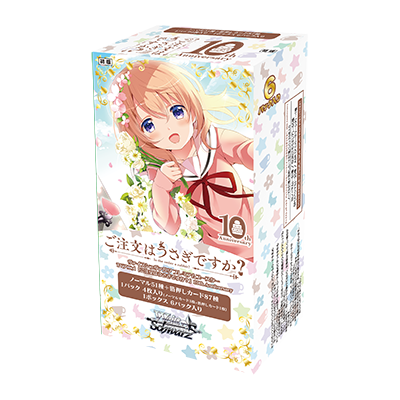Have you ever been to a bunny cafe? Surprisingly, such cafes actually do exist; although, most animal cafes are typically cat ones. Bunnies are quite aggressive creatures despite the historic and current depictions of them being innocent and cute. They can be scared to death, but they are also quite brave. Regardless, in the fictional world of rabbits, there exists a European-styled town in Japan where the story of our girls take place. Koi or Koisan is a duo of artists/writers whom authored the Gochiusa series. Gochiusa is a four-koma manga series that came out in March 2011 and continues this very day. Over the last few years, the series received three anime seasons and a theatrical film.


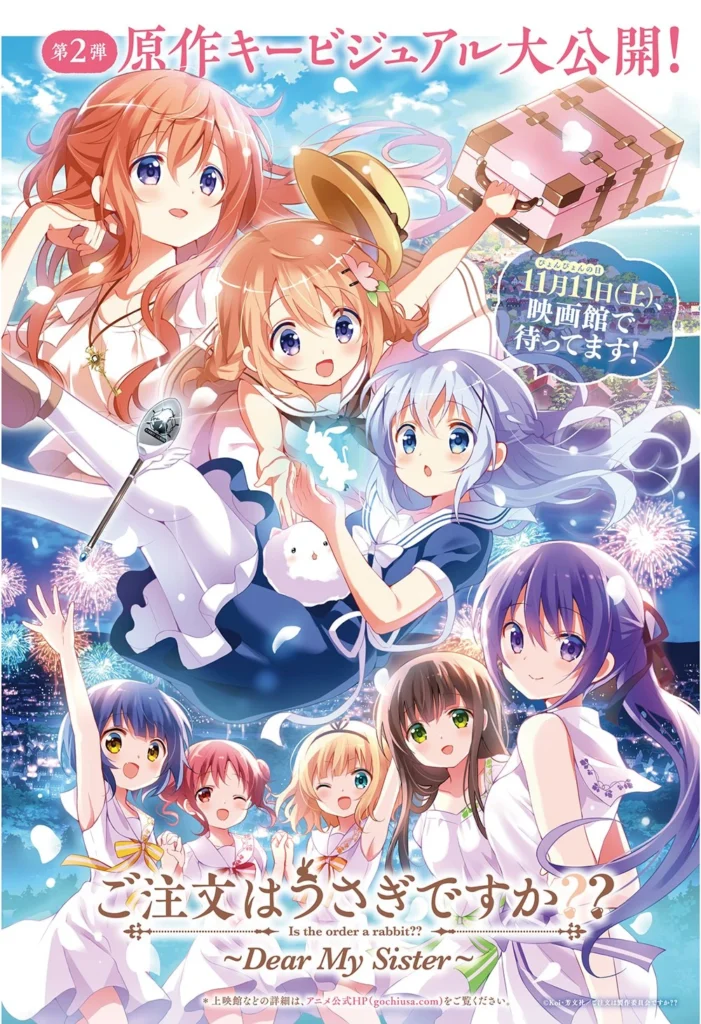
Gochiusa Season 1 Anime Series (center)
Gochiusa Key Visual 2 ~Dear My Sister~ Movie (right)
The series begins with Cocoa Hoto’s serene walk down the scenic roads of an unknown European-styled town. She is off to live here to pursue her academic studies. She ends up living under the residence of the Kafuu family, becoming quick friends with the young Chino Kafuu, a younger girl whom Cocoa immediately bonds with in hopes of getting Chino to see her as her older sister (Cocoa has an older sister complex). Soon after, hilarity ensures as the girls meet other town members such as that of the delicate but elegant Chiya Ujimatsu; the ditzy yet always reliable Syaro Kirima; and the elder tough but warmhearted Rize Tedeza. In addition, Chino’s classmates also join in the hilarious fun as Maya Joga and Megumi Natsu enter the ring of adorable innocent play as well.
Debuting in 2016, the Gochiusa trial deck and its first booster were simultaneously released based on the first season of the anime series. Later in the year, the series received its second booster (extra booster) based on the second season of the anime came out. Two years later, commemorating the featured film, ~Dear My Sister~, the series got yet another third booster. Three years later, the series received its booster for the third season of the anime in 2021. After eight years, Gochiusa qualified for a Re:Edit series as yet another booster came out in early 2022 that featured multiple reprints and a few new cards. Finally, releasing sometime after this post was written, the latest support in the form of the premium booster for the 10th anniversary for the series will come out, featuring some reprints with alter arts and some newer support for the series as a whole.

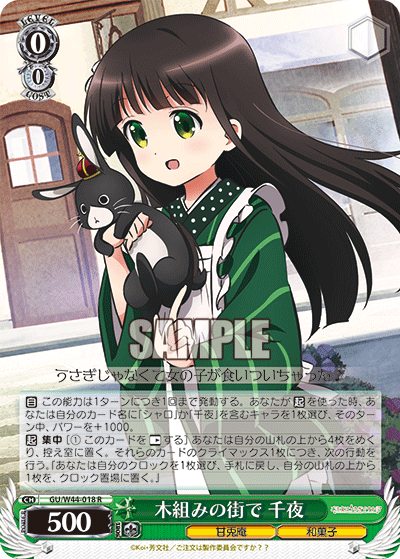
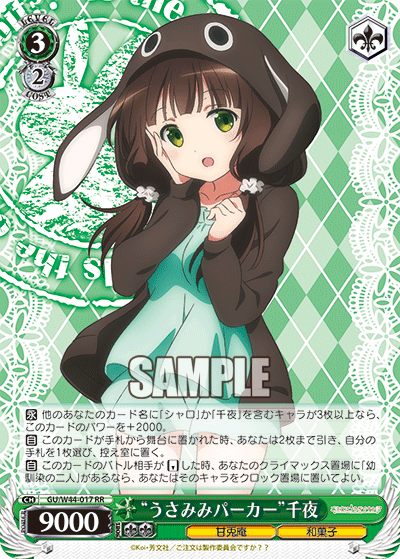
GU/W44-018R 木組みの街で 千夜 (center)
GU/W44-017RR “うさみみパーカー”千夜 (right)
Gochiusa went through several functional changes throughout the years. The series began with characters holding signature traits based upon where the characters worked alongside their own unique character trait. For instance, Cocoa would have the Rabbit House (ラビットハウス) and Bread (パン) trait whereas Chino, who also works at the same location would carry the Rabbit House trait but have the Coffee (コーヒー) trait instead.

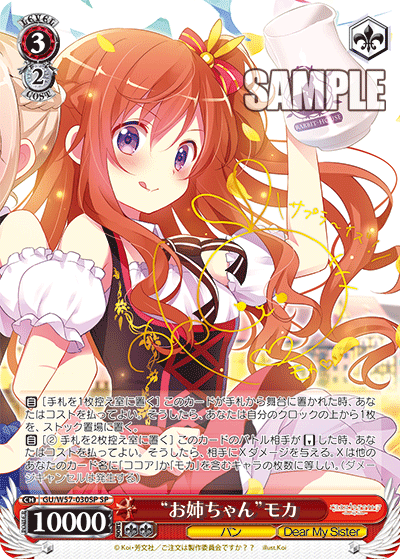

GU/W57-030SP-SP “お姉ちゃん”モカ (center)
GU/W57-077R 一緒に楽しも♪ チノ (right)
Following the release of the third booster, ~Dear My Sister~, a new trait was introduced called Dear My Sister (Dear My Sister). This trait replaced some of the old traits and worked exclusively for the ~Dear My Sister~ booster. This created some conflicts for cards that needed to check for specific traits.
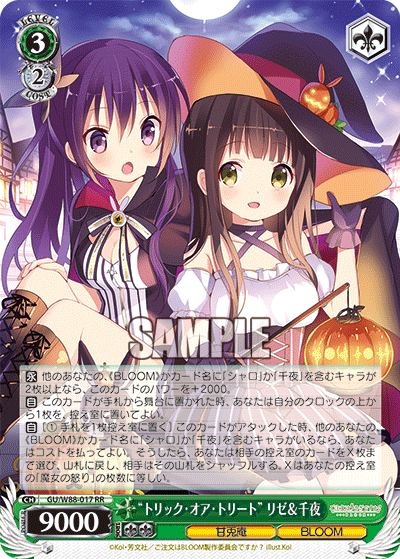

GU/W94-038SP-SP ドレスアップ ココア (right)
With the subsequent series of the fourth booster celebrating the third season, characters were also changed to carry the BLOOM (BLOOM) trait. Similar to Dear My Sister, the trait would replace one of the character’s traits. With the reprint set came yet another trait like BLOOM called Sing For You (Sing For You) which also complicated the traits even further.

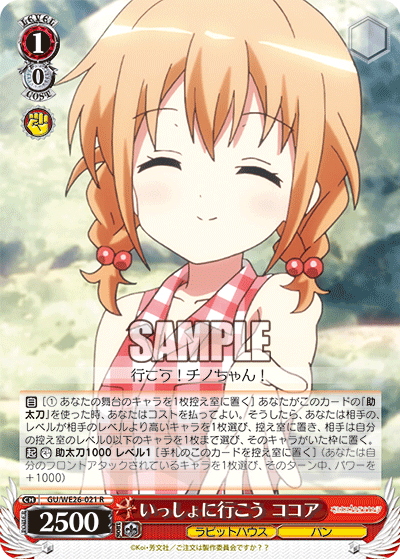
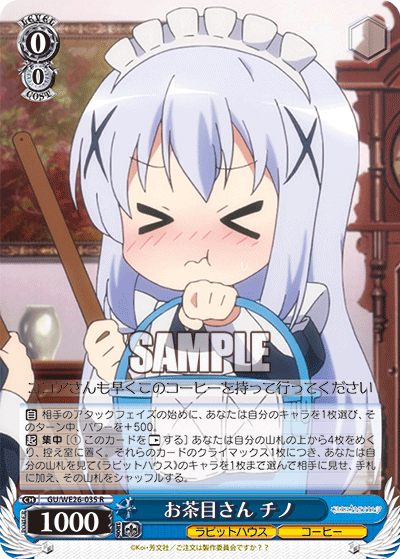
GU/WE26-021R いっしょに行こう ココア (center)
GU/WE26-035R お茶目さん チノ (right)
One of the more traditional deck profiles originating with the first set came with the building of decks using the job archetype of the characters within the show. Cocoa, Rize, and Chino are all employees of the lovely Rabbit House cafe. Their archetype revolves around using cards featuring one or all three of them.

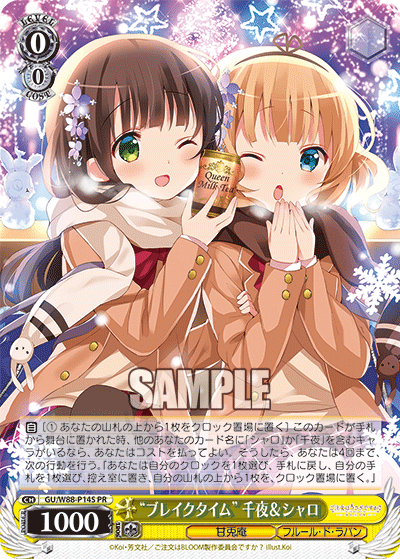
GU/W88-P14S-PR “ブレイクタイム” 千夜&シャロ (right)
The next archetype to speak about involves both Syaro and Chiya. Although the two girls belong to different cafes, they work in conjunction with each other as their deck archetype targets name traits instead of the typical archetype trait.

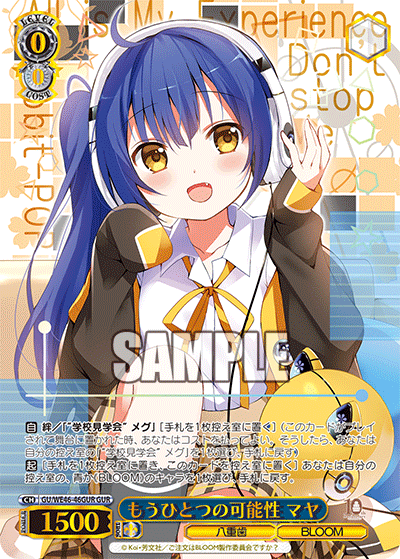
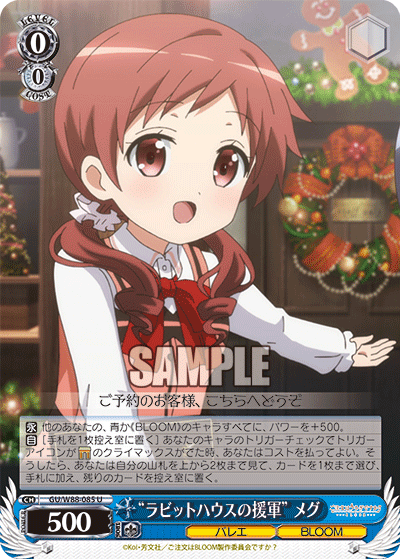
GU/WE46-46GUR-GUR もうひとつの可能性 マヤ (center)
GU/W88-085U “ラビットハウスの援軍” メグ (right)
The adorable elementary school students also appear as their own archetype, focusing more on names and colours rather than on the traditional archetypal trait. The three girls, Chino, Maya, and Megu, form the infamous Chimame-Tai, bringing terror on the streets as they barrage all the locals with their cuteness and innocence.
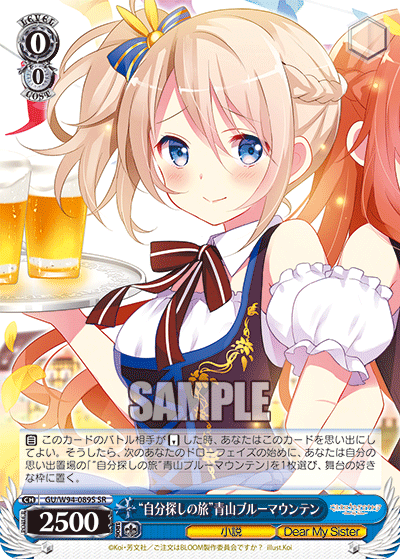
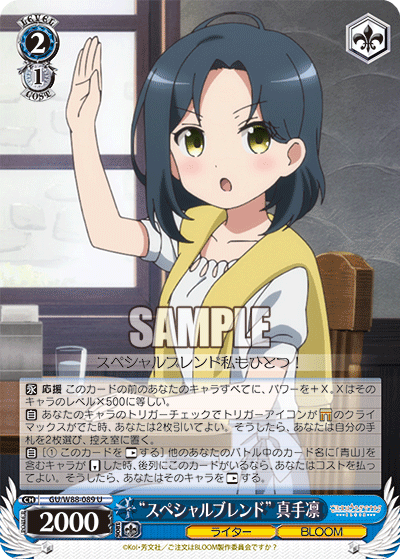
GU/W88-089U “自分探しの旅”青山ブルーマウンテン (right)
One smaller archetype included is based upon the best selling author, Ms. Aoyama Blue Mountain, and that of her editor, Ms. Mate Rin. They are a relatively new archetype in comparison to that of the other two archetypes above. Over the past few years, Aoyama and Rin have gained extra support. The duo still carry a small package in comparison to the other larger deck profiles, but if you love the work-evasive author and her work-chasing editor, you’ll love their interactions.

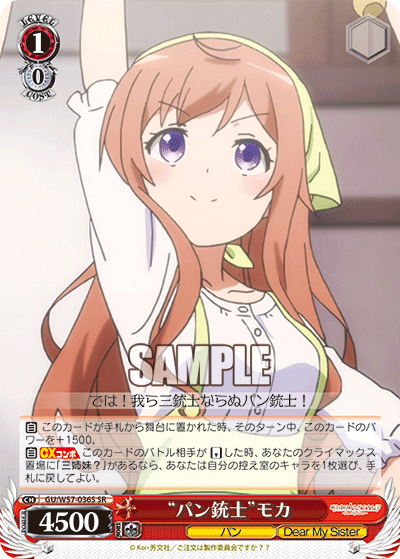

GU/W57-036S-SR “パン銃士”モカ (center)
GU/W57-039S-SR “パン銃士”ココア母 (right)
One last archetype design, essentially exclusive to the ~Dear My Sister~ set is that of the Bread family. Now Bread had appeared as an archetype long before the release of the booster with Cocoa. However, in the movie, Cocoa’s sister. Mocha, and their family take a more prominent role and are as such, featured on the cards themselves. Cocoa’s family would make its own exclusive deck which focused on benefiting from effects based upon the Hoto sisters. The deck profile itself plays along a bunch of synergies related to name traits for both Cocoa [ココア] and Mocha [モカ] and/or red colour synergies.
The cute “bunnies” have enraptured the hearts of many including myself. With their cute antics and silly adventures, it’s very easy to see why. Follow the adventures of the bunny girls as they explore the town and bask in the joys of youth.
